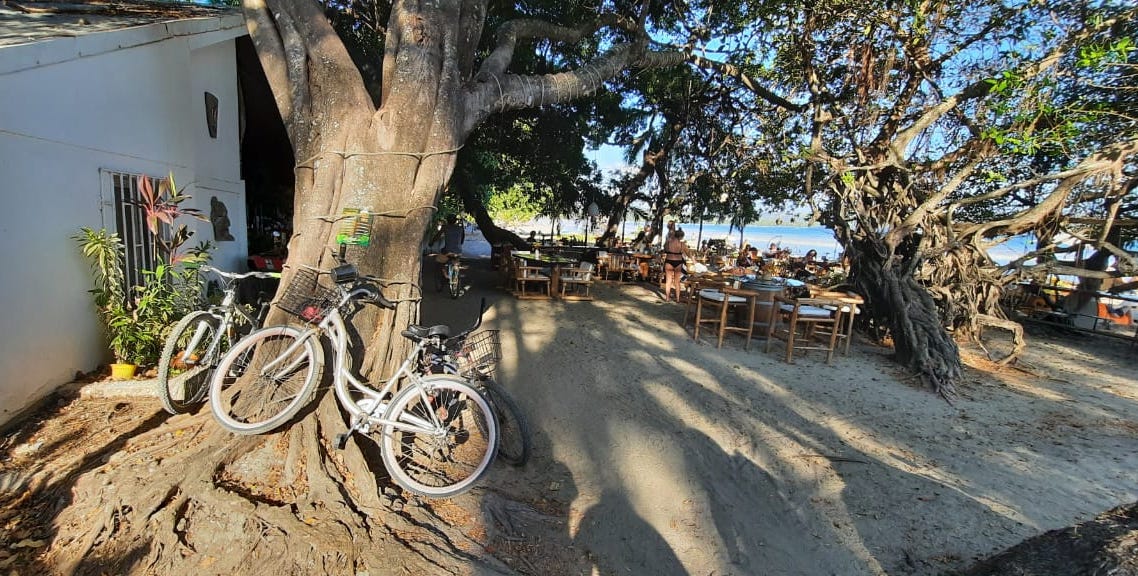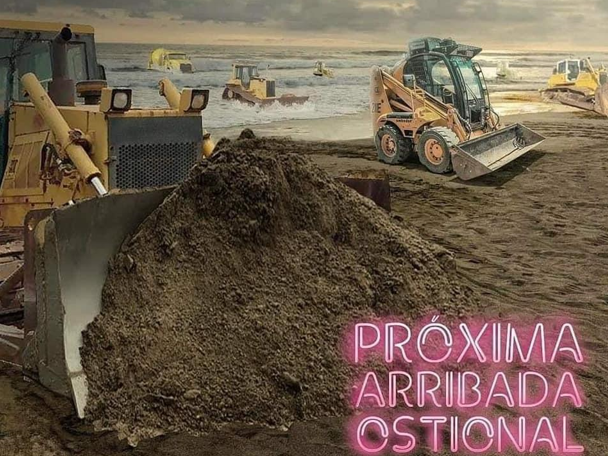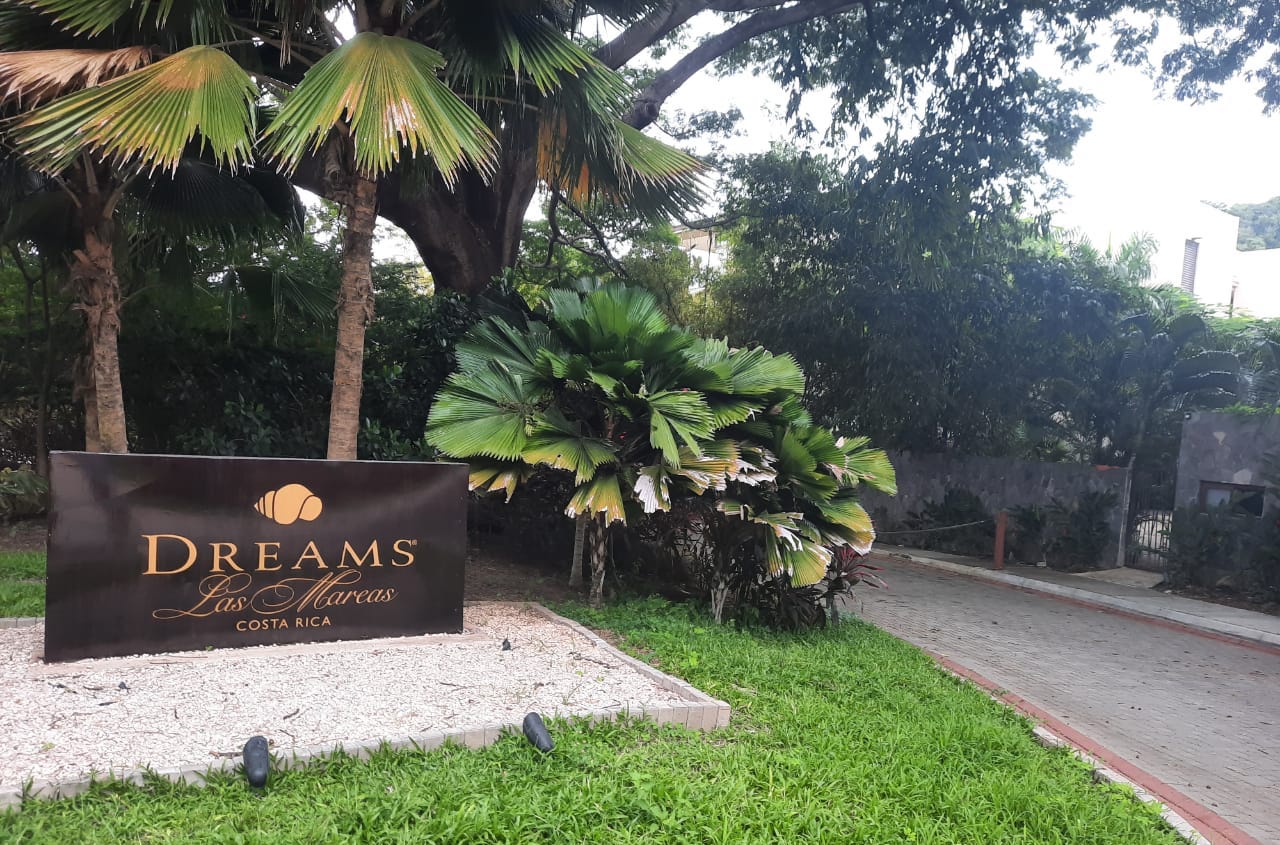25-11-2021
Costa Rica: Maritime Terrestrial Zone or Special Economic Zone?
Arturo Silva Lucas | Alba SudAn initiative in the Legislative Assembly of Costa Rica seeks to make modifications to the Maritime Terrestrial Zone law to make it more attractive to external investments. Which would have important social, environmental and economic implications in coastal territories.

Photography by: Arturo Silva Lucas.
A bill in the Legislative Assembly proposes to redefine the legal attributes of the Maritime-Terrestrial Zone (ZMT) so that it’s in accordance with the demands of the current tourism market. The project called Comprehensive Reform of Law 6043, Law on the Maritime Terrestrial Zone of March 2, 1977, and its Reforms [1] is processed in file 22553 of the Government and Administration Commission of the first power of the republic.
The project is promoted by the legislator of the province of Cartago Pablo Heriberto Abarca of the Unidad Social Cristiana party. Although Abarca does not represent a coastal province, his resume highlights having chaired the National Chamber of Tourism of Costa Rica (CANATUR) and the Central American Federation of Tourism Chambers (FEDECATUR). In addition, he was treasurer of the Union of Chambers and Associations of the Private Business Sector (UCCAEP). The rest of the team of proponents is made up of four legislators from the Central Valley and three from the coastal province of Puntarenas. At the moment, there’s no representation from the other two coastal provinces Guanacaste and Limón.
The base text was written based on the principles of efficiency and competitiveness, it proposes to make the ZMT a Special Economic Zone that facilitates foreign investment and the enjoyment of consumers of the coastal area. It appeals to the reduction of paperwork, simplification of legal definitions, and a post-facto concession evaluation model. On paper, it promises to respect the Costa Rica environmental regulations and the protection of coastal communities.
The ZMT and the details of the bill proposed
In Costa Rica, the ZMT is made up of two hundred meters of coastline from high tide. The first fifty meters is a public area and constitutes the inalienable patrimony of the State, therefore no one can claim ownership over it. The remaining one hundred and fifty meters correspond to the restricted area, open to be given in concession only by the municipalities with the payment of royalties under conditions of environmental care and benefit for the cantons. Also, the Costa Rican Tourism Institute (ICT) has rectory over the ZMT. As an extension of the executive branch, ICT is responsible for coordinating with other public institutions when necessary. For example, reviewing the technical and geospatial component that is included in the concession files submitted by the municipalities. Later, the ICT issues the institutional endorsement so that the concession is duly registered in the National Registry.
The law that now governs the ZMT was promulgated during Daniel Oduber's presidency in 1977. One of the innovations that it introduced was the concept of Tourist Use as part of the criteria to be considered when planning its use. By then the law responded early to an incipient coastal development. Characterized by small and medium-sized hotels owned by costarican nationals, along with some vacation homes of families of the central valley. Very different from the volatile and aggressive real estate market that is currently recognized on many beaches in the country.

Samara. Source: Arturo Silva.
The new text that is currently being prepared in the Legislative Assembly takes as its starting point the need to promote a new tourism era in Costa Rica because of the pandemic situation. In advance, he urges to include the ZMT in a comprehensive national development model in which attracting investment is a key axis of the national economy articulated with the tourism sector. The modification proposal was developed in eight key points that would have to be carried out to redefine the ZMT:
1º Provide legal clarity in the definition of public good so that it doesn’t antagonize with local, regional, and national development.
2º Establish the protection and conservation of the ZMT no longer as an end itself, but as a tool that produces benefits at different geographical scales. For this, it is necessary to reduce municipal procedures and implement a differentiated restrictive scale according to a Special Economic Zone.
3º Limit the participation of the National Institute of Housing and Urbanism (INVU) to urban regulatory plans of the coastal cantons. In this way, the management of the ZMT is left in the hands of the ICT and the respective municipalities.
4th Establish a framework for public policy action at three levels: a) a National Tourism Plan in charge of the ICT that establishes the main strategies for the ZMT; b) a Coastal Strategic Plan corresponding to each canton in which the guidelines are established; and c) executive plans to be borne by the municipalities.
5th Guarantee investment attraction processes that include elements of competitiveness and environmental sustainability to produce added value to the ZMT. For this, it is essential to strengthening the links between local actors and external investment.
6th Propose a model of regulation and post facto monitoring of concessions. In other words, promote the efficiency of the concessionaires through the evaluation of results once the works have been carried out to correct or punish bad practices.
7º Eliminate all those legal provisions that are no longer in force.
8º Clarify which coastal towns would be exempt from this ZMT regime for occupying protected areas or possessing special nomenclature.
What is it basically about?
It is no secret that the administration of the ZMT in coastal communities of the Pacific and the Costa Rican Caribbean has been conflictive. In partly attributable to gaps in territorial regulatory frameworks, inefficiency or corruption, as well as confusion and duplication of functions. On other occasions, the generator of conflicts has been institutional negligence when applying the law. Cases of communal resistance to the threat of forced evictions of historic inhabitants can be reviewed in the southern Caribbean of the country (Solano, 2016). On other occasions, it is the inability of coastal municipalities to sanction real estate developers who illegally take and use the ZMT, for example, the case of Marbella in Guanacaste.
The truth be told, this project to modify Law 6043 of ZMT is a proposal of solution only from an economistic-market logic point of view. In previous years, solutions were proposed based on local-community democratic participation, but they were never approved in the Legislative Assembly. For example, the 2009 Coastal Community Territories Bill (TECOCOS Law) proposed the creation of territorial citizen councils that would have the last word in coastal development. The bill was finally scrapped under pressure from then-legislator Otto Guevara. Today Guevara is part of a group of real estate investors opposed to the regulation of coastal construction in Nosara and Ostional beaches promoted by local civilian organizations that seek to protect the arrivals of sea turtles. Another alternative that was ruled out in the Legislative Assembly in the middle of this year was the ratification of the Escazú Agreement. This agreement would empower the coastal communities to organize and carry out local consultations when the environment, territory, and investments are concerned. However, a majority number of legislators, including Pablo Heriberto Abarca, voted against the entry into force of the agreement. Among the reasons that Abarca expressed is that the agreement went against the interests of the country's productive sector.

The proposed amendment to Law 6043 of ZMT carries with the elimination of institutional cross-control, justified in less paperwork. Eliminating paperwork would not be bad if it didn’t reduce decision-making to award concessions only to ICT and municipalities. Unfortunately, in the past, some coastal municipalities have been singled out for having poor administrative management of the ZMT. For example, in Santa Cruz in Guanacaste since 2017, various journalistic investigations have indicated that this municipality is not clear in how many concessions there are, nor how much is the fee they must pay. Given the conflict for real estate tourism reasons that is still registered in Santa Cruz, nothing suggests that it has been improved in this regard.
One of the major problems with the text is that it does not propose any kind of dialogue with the host communities in the coastal zones. This new document is clear in giving primacy to external investments in the ZMT. But it is vague in proposing participation mechanisms in concessions to local initiatives beyond generalizing the mention of local and private actors. Which forces the question, in what conditions of competition would the initiatives of the coastal local populations be in bidding processes of the ZMT? Small local businesses or rural community management projects have a gestation process that in many cases are not at the pace imposed by business efficiency and competitiveness, especially in regions with high added value such as beaches. Furthermore, in most cases, they operate without any kind of public support.
A proof of the latter happens in the canton of La Cruz, Guanacaste. A report from 2020 of the municipal internal auditor points that
In virtue of the high concentration of concessions in few hands, creating business groups of great power, it is recommended to establish the necessary control systems that allow to identify the concentration of concessions and diversify the Concession and Land Uses among more participants giving greater coverage to the national population and their initiatives. (Municipality of La Cruz, 2020, Annex 1)
In the same audit report, the Municipality of La Cruz is recommended to review how the negotiations that have allowed the ZMT concessions are taking place in a few hands. Some key informants from local businesses and neighborhood organizations on the beaches of El Jobo, Rajada, and Cuajiniquil have stated that they are repeatedly excluded from concessions in the ZMT; instead to benefit sudden tourist companies that appear at the moment of bidding. Emerging tourism companies with an already established structure of operations made up of names linked to the only mega tourism development in the canton, the Dreams-Las Mareas hotel, and its sister consortiums.

Hotel Dreams-Las Mareas. Source: Arturo Silva.
All of this should come as no surprise. The ZMT is essential for a Costa Rican sun and beach tourism market that is characterized by a trend towards the transnationalization and private management by tourist capitals of public spaces with passive participation of the public institutions. Along the same lines, the proposal echoes the Pact for Employment that the UCCAEP proposed to get out of the pandemic crisis. The business chambers presented a recovery plan for the tourism sector in which they demanded a reduction in environmental legislation and regulation along with the promotion of public-private alliances to manage tourist areas and thus create a favorable business environment.
The INVU's exclusion from participating in territorial plans or the claim to carry out post-facto evaluations of the permits granted in the ZMT is a nod in this regard. From this point of view, it seems that the solution is not to advance once and for all with Coastal Regulatory Plans, but rather to separate the ZMT from the rest of the cantons, making it a Special Economic Zone. You could almost say, why not, make the ZMT a Free Zone.
It would be hasty to say that this proposed amendment to ZMT Law 6043 is an imminent threat to the coastline. According to the website of the Legislative Assembly, the proposal has not left the Government and Administration Commission. Given the closeness of the national elections next February, it doesn’t seem that it will meet the conditions to be voted in the plenary sessions. However, there are already some coastal communities that are aware and have made a petition for signatures to fully archive the bill. In any case, these types of proposals are a thermometer to evaluate the political climate around coastal tourism.
